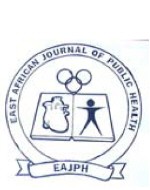
|
East African Journal of Public Health
East African Public Health Association
ISSN: 0856-8960
Vol. 3, No. 2, 2006, pp. 31-34
|
 Bioline Code: lp06014
Bioline Code: lp06014
Full paper language: English
Document type: Research Article
Document available free of charge
|
|
|
East African Journal of Public Health, Vol. 3, No. 2, 2006, pp. 31-34
| en |
DETERMINANTS OF UTILISATION OF MOSQUITO BEDNETS FOR MALARIA PREVENTION AMONG PREGNANT WOMEN IN KIGOMA URBAN DISTRICT, WESTERN TANZANIA
Kagoma S. Mnyika, Titus K. Kabalimu and Godfrey Mbaruku
Abstract
Objectives: To determine factors influencing utilisation of mosquito bednets for malaria prevention among pregnant women in Kigoma urban district in western Tanzania.
Setting: Kigoma urban MCH clinics
Methodology: Pregnant women attending antenatal care clinic in Kigoma municility were interviewed using a structured questionnaire. The questionnaire originally developed in the English language was translated into Swahili language and pre-tested before use. A trained team administered the questionnaire as part of a larger baseline study involving several malaria chemoprophylaxis strategies among pregnant women. Informed consent was obtained from each pregnant woman before questionnaire administration. The project was reviewed and cleared by the ethical clearance committee of the Muhimbili University College of Health Sciences.
Results: A total of 729 pregnant women participated in the interview. The age of the participating women ranged from 14-45 years with mean age of 26.7 years and standard deviation (SD) of 5.4. Of the 729 pregnant women interviewed, 61.0% (445) knew about malaria and of these 69.4% (309) stated that they knew how to protect themselves against malaria. About 47% (N=728) of the pregnant women interviewed reported being current users of bednets. Reported use of bednets appeared to increase with increasing age of the pregnant women. Single and divorced pregnant women were less likely to report being users of bednets as compared to married or cohabiting pregnant women (49.2% versus 18.6%, odds ratio (OR) = 0.24, 95% confidence interval (95%CI) = 0.12 - 0.46). Similarly, reported use of bednets significantly increased with increasing level of education. Employed and those engaged in business were significantly more likely to be bednet users than housewives or peasants.
Conclusion: We conclude that factors influencing use of bednets among pregnant women in Kigoma urban district include marital status, educational level and occupational status.
|
| |
© Copyright 2006 - East African Journal of Public Heath
|
|
